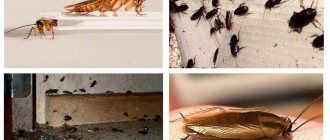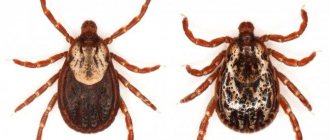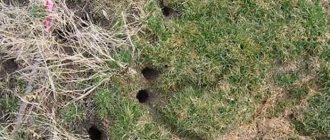Rainy weather means that our countryside areas are infested with squads of slugs and snails. These pests, despite their apparent slowness, are very agile in destroying crops. We tell you how to deal with slugs in the garden.
Slugs are a common name for gastropods that have lost their shells during the course of evolution. Since they, unlike snails, do not have natural protection (shells), slugs are forced to hide from the sun's rays in the shade and avoid dry places, preferring high humidity.
Slugs on cabbage: what to do?
One of the most favorite delicacies of slugs is cabbage. Moreover, these mollusks are not at all picky and equally actively eat all popular types of cabbage: Chinese cabbage, broccoli, cauliflower, Brussels sprouts and, of course, white cabbage. Let's talk about how to treat cabbage against slugs.
The fight against slugs in the garden begins with prevention. It is much easier to prevent the appearance of a pest than to deal with the consequences later. So:
- Plants should not be planted too close to each other. The optimal distance between seedlings is 50×50 cm;
- regularly destroy plant debris in the garden and garden: slugs love shady places and hide in heaps of garden trash during the day;
- systematically mow the grass and get rid of weeds - this is also an excellent hiding place for harmful shellfish.
A reliable remedy for slugs on cabbage is to treat the plantings with preparations designed specifically to combat mollusks: Bros, Groza-3, Slug Eater, StopUlit, Ferramol, Predator, etc. Most slug preparations are granules that are distributed over the surface of the soil.
If the number of pests in the area is not too large or you prefer folk remedies for slugs, use the methods described below.
Why do uninvited guests appear in a suburban area?
In nature there is a certain system of balance, according to which there are pests, ordinary animals and other species of the living world. Slugs breed in suburban areas under conditions of rainy autumn, warm and early spring, and a large accumulation of fallen leaves. They love compost pits, dark and damp areas.
Slugs are also frequent guests of cellars and basements. They really do not like dry and hot places that are in direct sunlight, and they also do not tolerate high temperatures well. However, before deciding on the means to combat slugs in the garden, it is worth paying attention to some interesting nuances.
Slug trap
The fight against slugs with folk remedies is based on identifying the pest’s weak points and “competently” striking. As mentioned above, during the day slugs hide in shady places, and at nightfall they come out of their shelters in search of food. Build a trap to lure the shellfish and then dispose of them. It's very simple!
Beer as bait
Take disposable cups and dig them in several places in the garden bed so that the edges of the cup do not rise above the soil level. Pour some beer into each glass. Slugs are big fans of this intoxicating drink, despite the fact that it is harmful to them. By the morning you will find dead pests in the cups, and all that remains for you is to get rid of the bodies (some feed them to chickens). Such a trap should be installed in the late afternoon and covered during the daytime so as not to kill beneficial insects that are greedy for the bait.
Cabbage beds can be watered with warm water (40-50°C). But be careful - this method only works on cabbage! This water temperature can harm other crops.
Instead of beer, you can use other liquids that slugs are also not averse to profiting from: fermented compotes, juices, syrups. If you don't have cups, use flat containers with low sides.
False cover
Here's another remedy for slugs in the garden. Grease a wooden board with kefir or other fermented milk product and place it on two bricks or low stones with the greased side down. The slugs will smell a pleasant aroma and crawl towards the bait overnight. In the morning you will find a large number of pests under the board.
You can place pieces of roofing felt, linoleum or other material in the garden so that slugs can crawl under cover. By morning, many individuals will gather in such a trap.
We fight pests with biological means
There are a huge number of methods by which you can quickly and effectively remove unwanted neighbors from your suburban area.
Biological remedies for slugs in the garden in summer can be very effective. The best of them is considered Phasmarhabditis hermaphrodite. This substance is harmless to the environment, people and animals. To quickly get rid of parasites, you need to dilute a small amount of this component with water and spray the resulting mixture on the beds for a week.
How to get rid of slugs in a greenhouse
Slugs in the garden live not only in open ground, but also in closed ground. In greenhouses and greenhouses, experienced gardeners advise dealing with slugs as follows. Tops and leaves of different plants are laid out between the rows (it is better to choose those that pests like: tomatoes, lettuce, cucumbers). Slugs will crawl towards the bait to eat and at the same time take shelter. In the morning, the “traps” are collected along with the shellfish and destroyed. By the way, you can get rid of woodlice in this way.
Slugs cannot tolerate the smell of some plants: lavender, santolina, laurel, thyme, sage, parsley, rosemary, etc. Plant them next to vegetable crops to protect the garden.
There is another good way to protect various crops from shellfish invasion. The slug's abdomen is sensitive to rough, rough or sharp surfaces. Place fine gravel or crushed eggshells or nut shells around the plant to keep slugs from getting to the treat. If possible, use fragments of shells for the same purposes - their sharp edges will repel pests, and this mulch will last for a long time.
- Everything you need to know about mulch, its types and effects
Caution: not all types of mulch are created equal!
Plants can literally be protected from slugs: for this, they use rims with a bent edge (can be cut from plastic bottles or bought), which are installed in the soil around the trunk of cabbage (or other crops).
Rough surfaces
Slugs and snails do not like unnecessary obstacles. Therefore, you can make their life very difficult if you sprinkle something rough around the plants, for example, coarse sand or crushed egg or nut shells. Sawdust is also suitable for this purpose.
Such means of combating slugs in the garden are absolutely safe for both people and the plants themselves. At the same time, young seedlings of the crop will remain protected.
However, in this case, it is necessary to ensure that no passages are formed in the rough surface through which slugs can penetrate to the plant.
Slugs in the garden
Unfortunately, the range of gastronomic preferences of slugs is quite wide, which means that insidious mollusks are not limited to the garden. Some garden crops are also susceptible to attacks by the slippery pest.
Small black slugs on cherry or pear leaves are not slugs at all, but larvae of the cherry slimy sawfly. To get rid of this pest, plants are sprayed with Bitoxibacillin, Inta-C-M, Kinmiks, etc.
Slimy sawfly larva
Slugs on flowers
You might ask, “What do slugs eat in the garden?” Harmful mollusks are not averse to eating the tender pulp of ornamental plants. You can especially often find slugs on hostas: the mollusk gnaws at the base of the leaf (petiole), and it falls to the ground, and the pest receives both shelter and food. If you do not pay attention to damaged flower leaves in time, the entire flower garden can be significantly damaged.
In general, protecting against slugs in the garden is no different from controlling pests in the garden. The soil in the flower garden can also be sprinkled with Predator, Groza, etc., and water traps can be used. It is important to tie up spreading flowers so as not to create a “house” for slugs under the branches. A good remedy for snails and slugs is mulching the soil with drunken tea, coffee, peat, ash, and sand. These substances repel shellfish.
Slug enemies
Hedgehogs, toads and birds simply love to feast on annoying shellfish. To attract these animals to your garden, it is enough to make small ponds on your site. Hedgehogs are very greedy for dog food, so you can sprinkle it around the garden. However, before doing this, you should make sure that your neighbors do not have animals that might also get into the habit of going to the site. If you build bird feeders, they will more often fly into the garden and feed not only on the treats prepared for them, but also on pests.
Chemicals
In large garden areas where it is not possible to control snails with repellents and traps, chemicals are used. This method of struggle is perhaps the most effective of all those previously listed. However, it should be remembered that all insecticides are toxic and any treatment of the garden with chemicals harms animals and plants.
The Swiss drug "Meta", used all over the world for more than 100 years and recognized as the most effective among analogues, is produced in our country under the name "Thunderstorm". The destructive effect of the insecticide is provided by metaldehyde in combination with additives that attract slugs and snails. Once in the digestive tract of the mollusk, the chemical completely dehydrates the body.
The granules are scattered between the beds, creating a protective barrier. The product can be used in any weather, as the granules are not afraid of moisture. In addition, additives that attract pests repel birds, which makes the use of the product safe for the feathered inhabitants of the garden.
Another domestic remedy for slugs, based on the action of metaldehyde, is “Slug Eater”. The drug is easy to use, has a protective effect lasting up to three weeks, and avoids a decrease in yield and loss of product presentation.
Additional methods
Hot water (for sprinkling cabbage)
Experienced gardeners recommend spraying cabbage with hot water. This vegetable can withstand temperatures up to 60 degrees without consequences, while slugs die at 40 degrees.
If pests are visible between the leaves on the heads of cabbage, you need to heat the water to 40-45 degrees and thoroughly spray the plants. The treatment should not be long so that burns do not remain on the leaves. Dead shellfish must be manually selected from the sheets after a hot shower.
Add coffee to the water . Instant coffee helps get rid of slugs well. Upon contact with caffeine, large individuals lose activity and orientation, and small ones die. To spray, just dissolve a double portion of coffee powder or granules in a glass of water, and then treat the cabbage. Having smelled the smell, slugs will avoid cabbage beds, but coffee does not harm the plants.
Pests also do not like the smell of wormwood, tobacco, marigolds, and walnut leaves . They need to be brewed in boiling water, left for 2-3 hours, then the cabbage should be treated with strained and cooled infusion. Occasionally, you can use a weak saline solution (100 g per bucket of water) or a solution of ammonia in a ratio of 1:6.
Traps
During the day, slugs always hide from the heat in thick grass, under stones, and in compost heaps. You can make slug traps.
To do this, you will need available materials: old boards, pieces of slate, burlap, roofing felt and other rubbish. Having chosen a convenient open place, you should water it thoroughly and lay any material on top.
- Burlap and rags need to be additionally moistened with water.
- In a day or two, slugs will gather under the shelter
- They should be collected and taken away from the site, and the shelter should be left for the next batch.
See the photo below for what a slug trap looks like.
A good trap can be made from an ordinary plastic bottle . The bottle is crushed on the sides so that it does not roll on the ground, a little fruit juice, honey or beer is poured inside, and placed flat between the cabbage beds.
You can press it down on top with a flat stone or board, fixing it in one position. Slugs will definitely smell the smell and get into the bottle, but it will be difficult for them to get out. Once every 2 days you need to check the traps, remove any pests and add juice.
Lures
- Grapefruit, orange or watermelon peels are used as bait ;
- To do this, cut them in half, select the pulp, and cut a small hole in the center of the peel.
- The resulting cups are placed cut side down on the beds in the evening;
- Attracted by the aroma, slugs crawl under the peel and remain there until the morning.
After this, all that remains is to check all the baits and collect the shellfish.
Fruit baits
The peel of watermelons, oranges and other citrus or melon crops is an excellent assistant in the fight against slugs in the garden. Using folk remedies you can get rid of these pests for a long time.
In order to get rid of shellfish, you need to cut the crusts in half and make small holes in the center in the resulting improvised cups. Ready-made baits are installed on the beds so that the holes are on top. Slugs will crawl inside through the holes, but will not be able to get back out.
The next day, all you have to do is collect the pests and throw them away.
Prevention
Work to prevent slug attacks begins with the onset of spring. Experienced gardeners recommend taking the following measures to prevent the appearance of pests:
- limit the area with plantings to a strip of wood ash or mustard;
- Carefully weed out weeds and remove excess plants to ensure sunlight reaches the garden bed;
- in the fall, carry out deep digging of the soil to destroy the homes of mollusks and destroy eggs;
- feed birds and hedgehogs;
- Carry out even watering, avoiding waterlogging of the soil.
As you can see, preventive measures do not require a lot of time and money. This is much better than poisoning the soil and garden plants with chemicals.
It is difficult to choose the most effective of all the methods of fighting snails and slugs in the country, so it is advisable to use several methods at once. It is possible and necessary to fight against mollusks. If it is not possible to completely rid the garden of pests, then reducing their population will undoubtedly bring tangible benefits to the plantings, and even in a rainy summer will allow you to get a full harvest.
AfterText #1
Soda and salt
If slugs appear in the garden, it is not difficult to decide how to fight parasites with folk remedies. There are a lot of recipes.
Table salt is an excellent remedy that will help get rid of shellfish that have settled on the compost heap. As you know, they love to feast on rotting plant debris. To get rid of them, just scatter the components onto the compost pit in the evening. It should be borne in mind that the soda must be calcined.
To prepare a solution for spraying, just mix 50 grams of soda and 12 liters of water.
How do slugs live?
A gastropod, very similar in appearance to a snail, is called a slug. Its translucent body has no limbs and moves by contracting the muscles of the sole. There are tentacles on the head that act as sensory organs. Each cell secretes a small amount of secretion, which prevents the slug's body from drying out completely, promotes its movement and repels some predators.
Ground slugs are very afraid of sunlight and prefer dark and damp places. These pests reproduce best at temperatures from +15°C to +19°C. During the rainy, hot summer or warm, humid autumn, reproduction occurs most intensively.
In dry weather, slugs in the garden become inactive and their activity decreases. Mollusks tend to climb into a dark place in order to retain the moisture in their body longer. Some of them build earthen cocoons, holding soil particles together with their own mucus, and wait there until favorable conditions arise.
Chemicals
The most powerful, potent way to get rid of slugs in your garden or garden is to use chemicals. To help gardeners, gardeners can use special preparations (Thunderstorm, Slug Eater, Meta, Bros) based on Metaldehyde, which has a detrimental effect on mollusks (Figure 8).
Chemicals in the form of granules must be distributed along the perimeter of planted plants and between rows. Particular attention should be paid to the fact that treatment with such chemicals should be carried out 20 days before the harvest ripens.
Figure 8. Chemicals - a radical and unsafe method of control
All Metaldehyde-based chemicals are toxic and dangerous to humans and pets. However, they are not harmful to insects and earthworms. Harvesting from beds treated with chemicals is allowed only 3 weeks after the last treatment.











